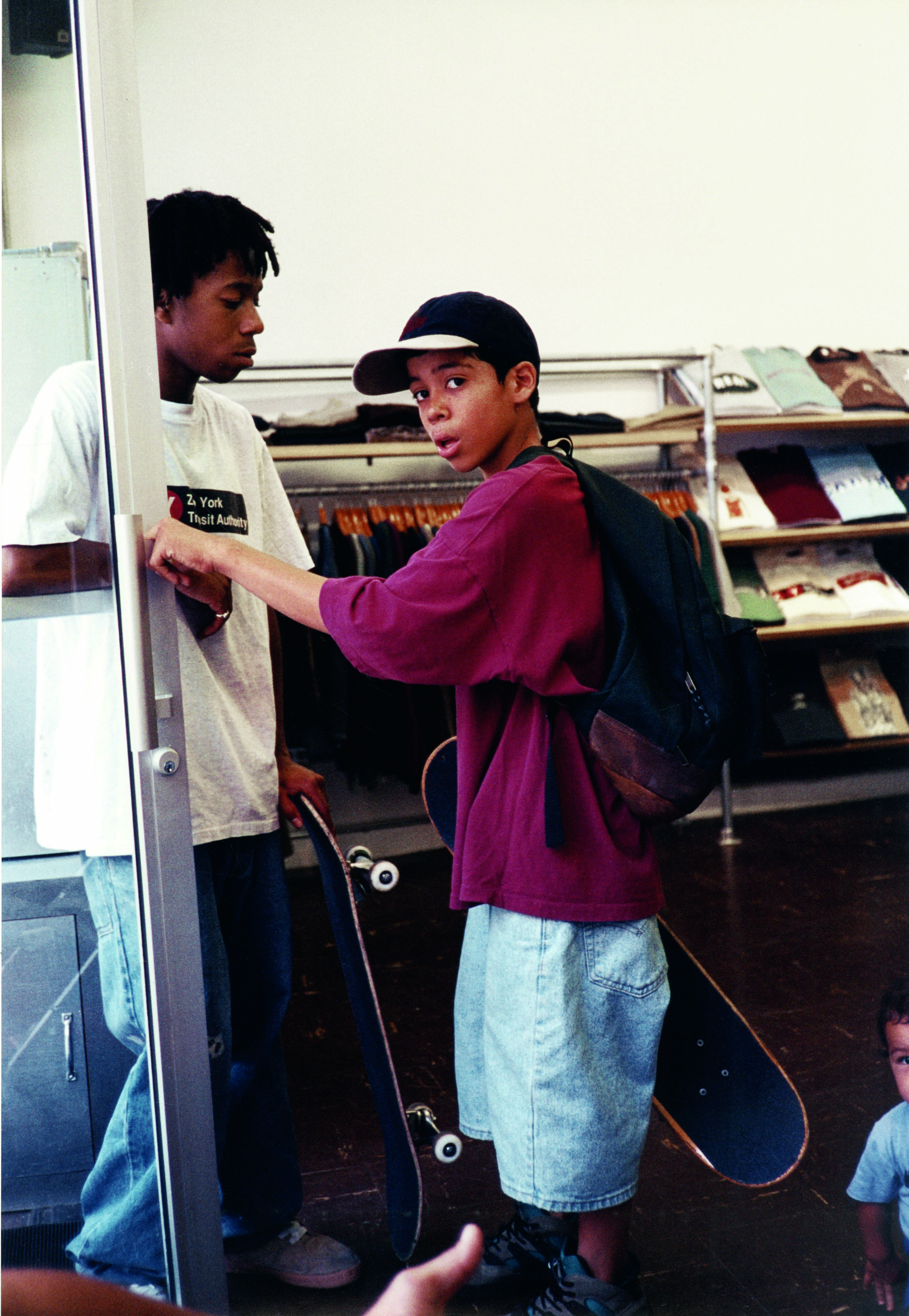
Summer Reads: Harmony Korine on Supreme's wild, early days
In our Supreme book the movie director recalls the birth of the skate brand
Harmony Korine got his first skateboard at the age of 12. The film director’s family was living in Nashville, Tennessee, but around the time Korine received that first board, he also began to spend time at his grandmother’s house in Queens, New York.
Those two cities provided very different skating environments. “Back then everyone hated you, fighting was an everyday thing, especially growing up in the south,” the film director would later recall.
NYC was a little more welcoming. “I remember probably meeting (NY pro skater) Harold Hunter when I was about 13 and he was probably a year younger,” Korine has said. “Harold and I became really close right away. That’s how I fell in with all the East Coast skaters. It was a whole other style and a whole other world. It was very exciting.”
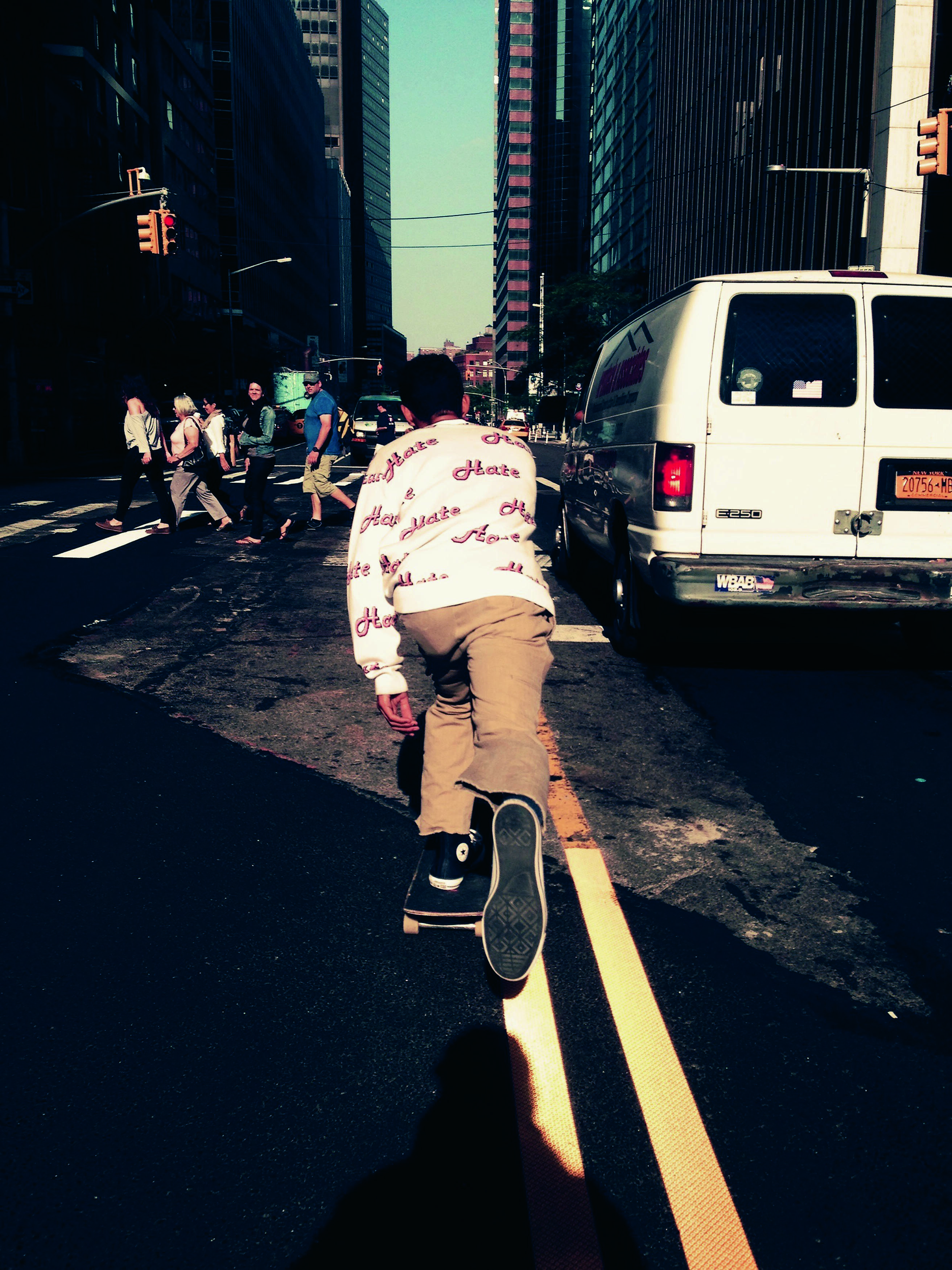
New York, 2013, by William Strobeck
During the late eighties and early nineties, downtown New York, while far from being a welcoming playground for teens, was undergoing a surprisingly free, fallow period. “While successive generations downtown had enjoyed a rare degree of urban abandonment and neglect, growing culture like weeds in all that squalid vacancy, by the dawn of the nineties that accrued legacy was broken,” writes the cultural critic and curator Carlo McCormick in our Supreme book.
“Simply put, drugs and AIDS had taken away the very best, leaving the rest somehow beaten. Still far from the white and polite bastion of affluence and entitlement it has become now, gentrification had already put the squeeze on as a creative brain drain of freaks and free thinkers fled for cheaper pastures. To put it in perspective: Supreme opened because the city didn’t have a real skate shop, and it was what might be kindly called a failing business until they hit on the idea of making and selling their own T-shirts for a bit of desperate cash flow.”
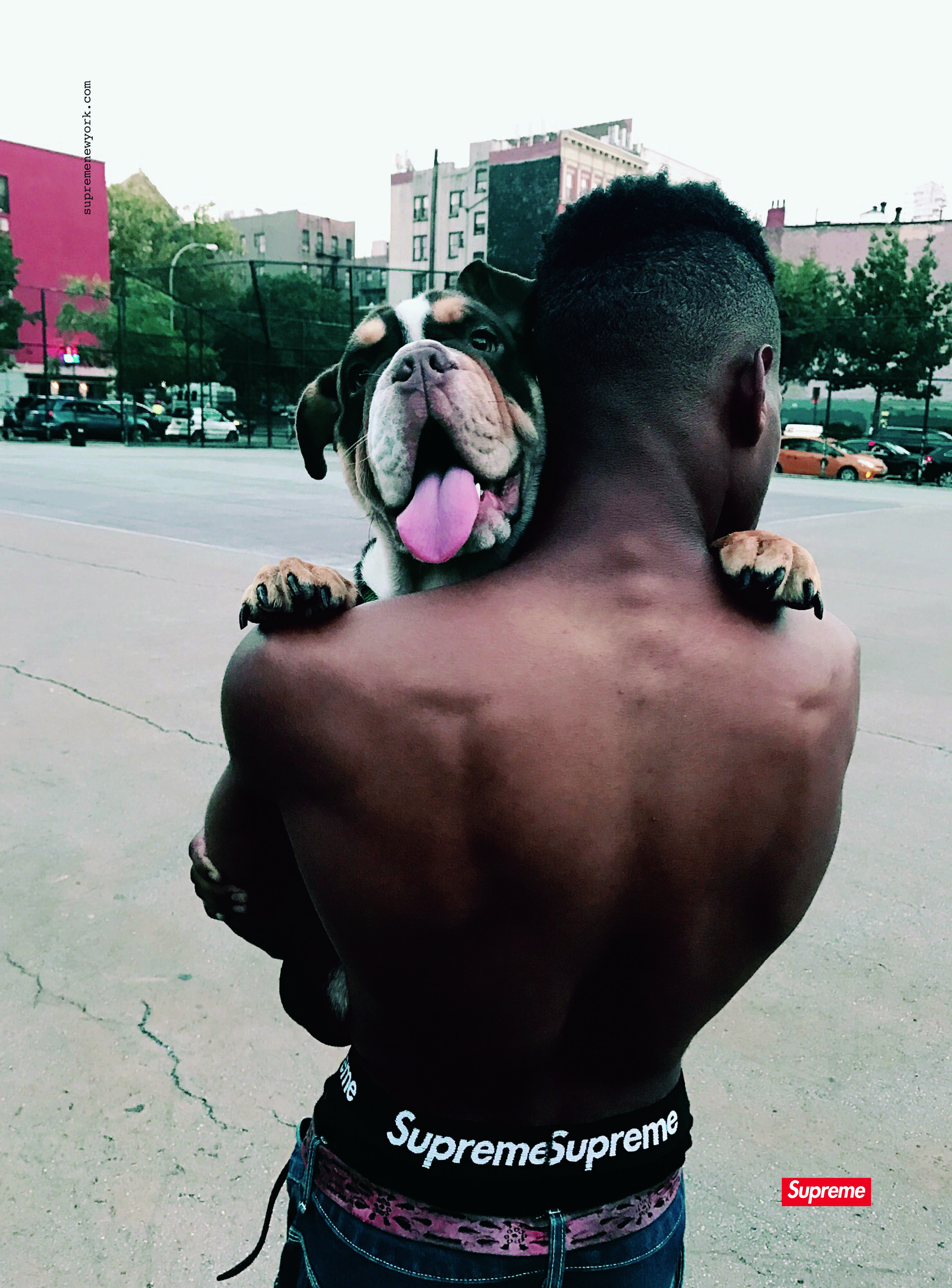
i-D Magazine ad by William Strobeck, 2016
Supreme was founded in Manhattan in 1994, around the same time Korine was invited to write a screenplay for the photographer Larry Clark. By this point, Korine was a young college dropout, and hadn't completed cinematic work to his name, yet he was deeply embedded within the East Coast skate scene, and, after meeting Clark in Washington Square Park, Korine wrote the screenplay for Kids in three frenetic weeks.
Many of the film's stars weren’t professional, classically trained performers but skaters such as Hunter, and many of them spent their days at Supreme, channelling many of the same impulses as Kids, the movie.
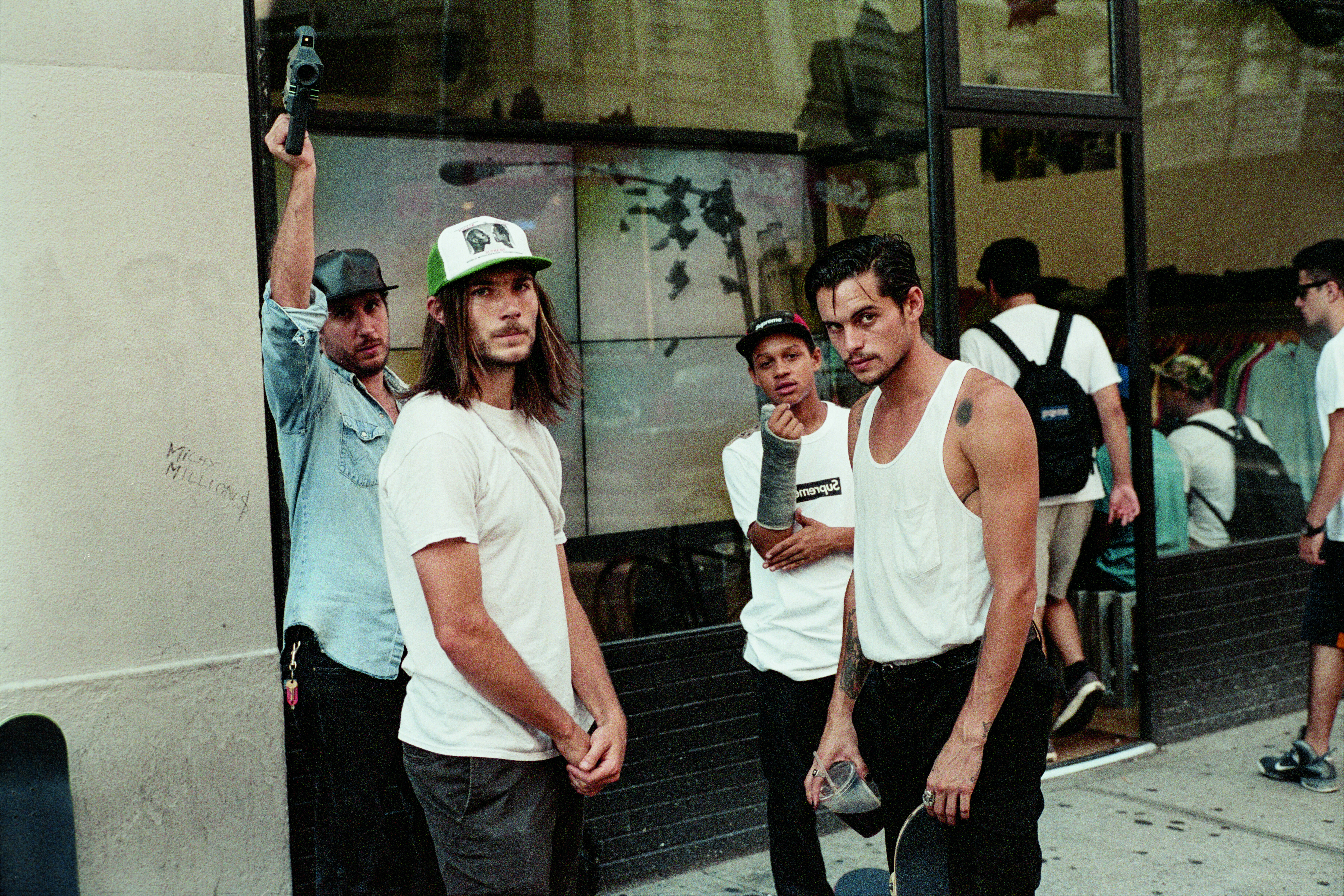
Supreme team by Atiba Jefferson, NYC, 2013
“Supreme, as a site of irascible delinquency—not as a brand or even a store so much as a clubhouse for a new wave of miscreants—was born out of the irrepressible energies and wretched boredom that is youth,” writes McCormick. “As it turns out, all those countless hours wasted smoking blunts, talking shit, stealing anything that wasn’t nailed down, going where you’re not supposed to, drinking beer, and watching skate videos was somehow the best investment any brand or community could have hoped for, but rebellion often comes from ennui and disaffection. Urgency doesn’t wait, and when everything around you is fucking boring, that’s just permission to find your own fun, even if it means breaking a few rules and bones along the way. A whole lot of people didn’t get it; they just couldn’t fathom the socialising process within the antisocial behaviour. But for those who did, it wasn’t just that the kids were still all right; they were the best hope we had.”
Some of that hope lay in the way the skaters, designers and hangers-on at Supreme were open to a wide range of visual reference points, from burger brand logos to contemporary art.
“They were easy adapters to a kind of dissonance, where you have several things at different points on the cultural spectrum that are all connected by a kind of aesthetic or vibe,” Korine has said.
Supreme’s founder, James Jebbia can rightfully receive much of the credit for shaping that vibe. “James tapped into a secret sauce,” Korine asserted, “and they’ve kept strong because youth propels the culture, and they are always on the side of the youth. You can’t fake that.”
Korine would later live in the same neighbourhood as the Supreme store, and saw his career flourish as a filmmaker, just as Supreme rose to fame. “We all grew up together,” Korine reflected. “We have a shared history and we were all kids together in the beginning. We all had big dreams, we started from the bottom, the whole fuckin' team.”
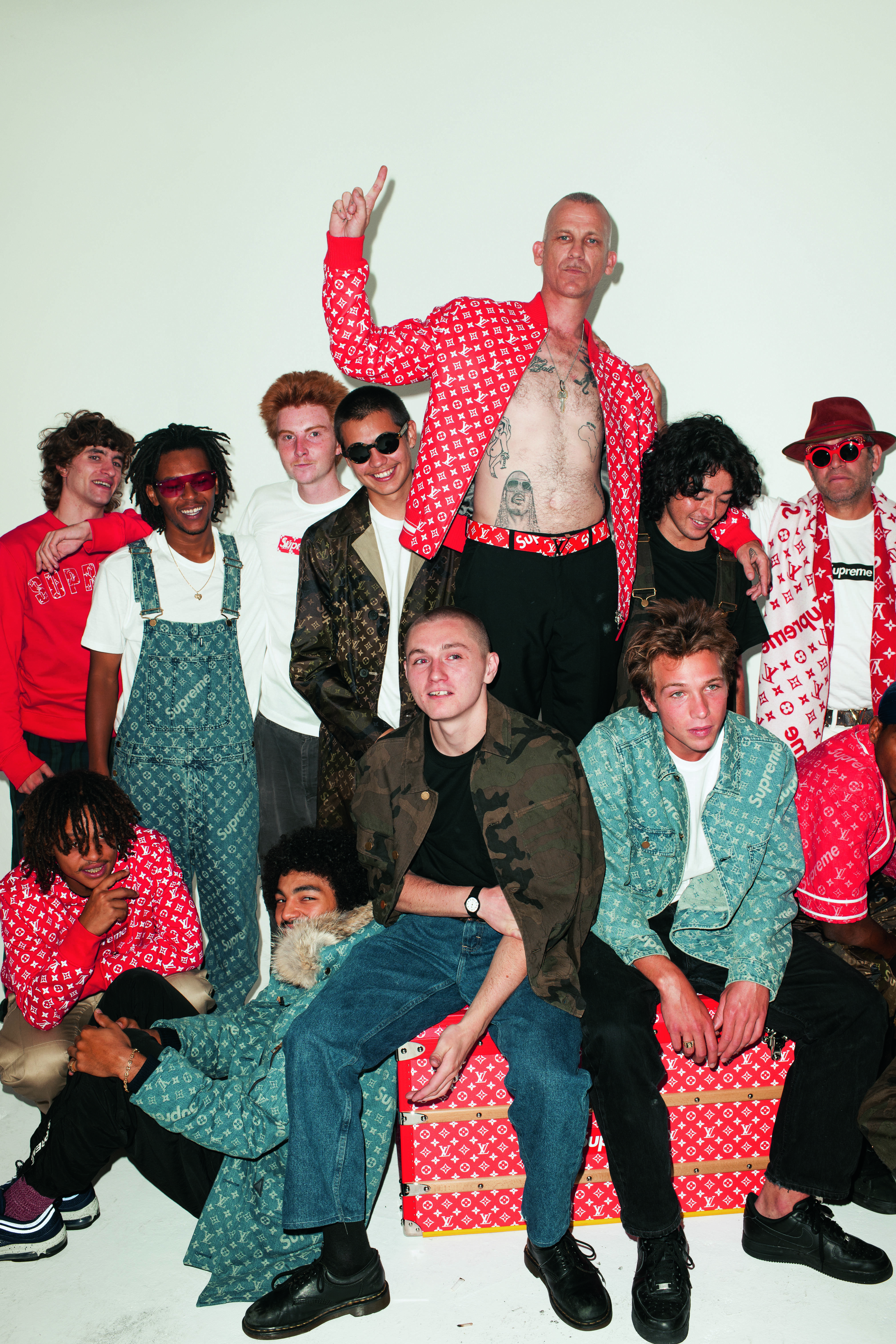
A quarter century on, Korine remains very much part of that team; he has shot campaign imagery for the brand, and put pen to paper again to write a poetic tribute to Supreme, which opens our book. This is how it begins (complete with freeform punctuation).
”We came and we went. skateboards, broken teeth, gold teeth, we dipped, we boosted, broken homes, slept on rooftops, chased oblivion, kids, mothers were scared, fathers were scared, laid out in parking lots, back streets, shadows, no money, no mercy, pocket change, fought with security guards security guards nobody, stole the ketchup from carls jr hopped, up on turnstyles hopped up, a few got locked up.”
The next stanza expresses the wild, violent side of skating in NY at that time; “created the scene, took some licks, laughed a lot, tucked our pants into our socks got engulfed by the scene, met at the banks banked some change never trusted a bank pagers and beepers, midnight creepers washington square, stay away from squares all day pushing. pushing the limits whats good yo, lo lifes, knuckle up, got fucked up, couldn’t barely read read the tea leaves, the writing on the walls the tags, the hags, the hangers on.”
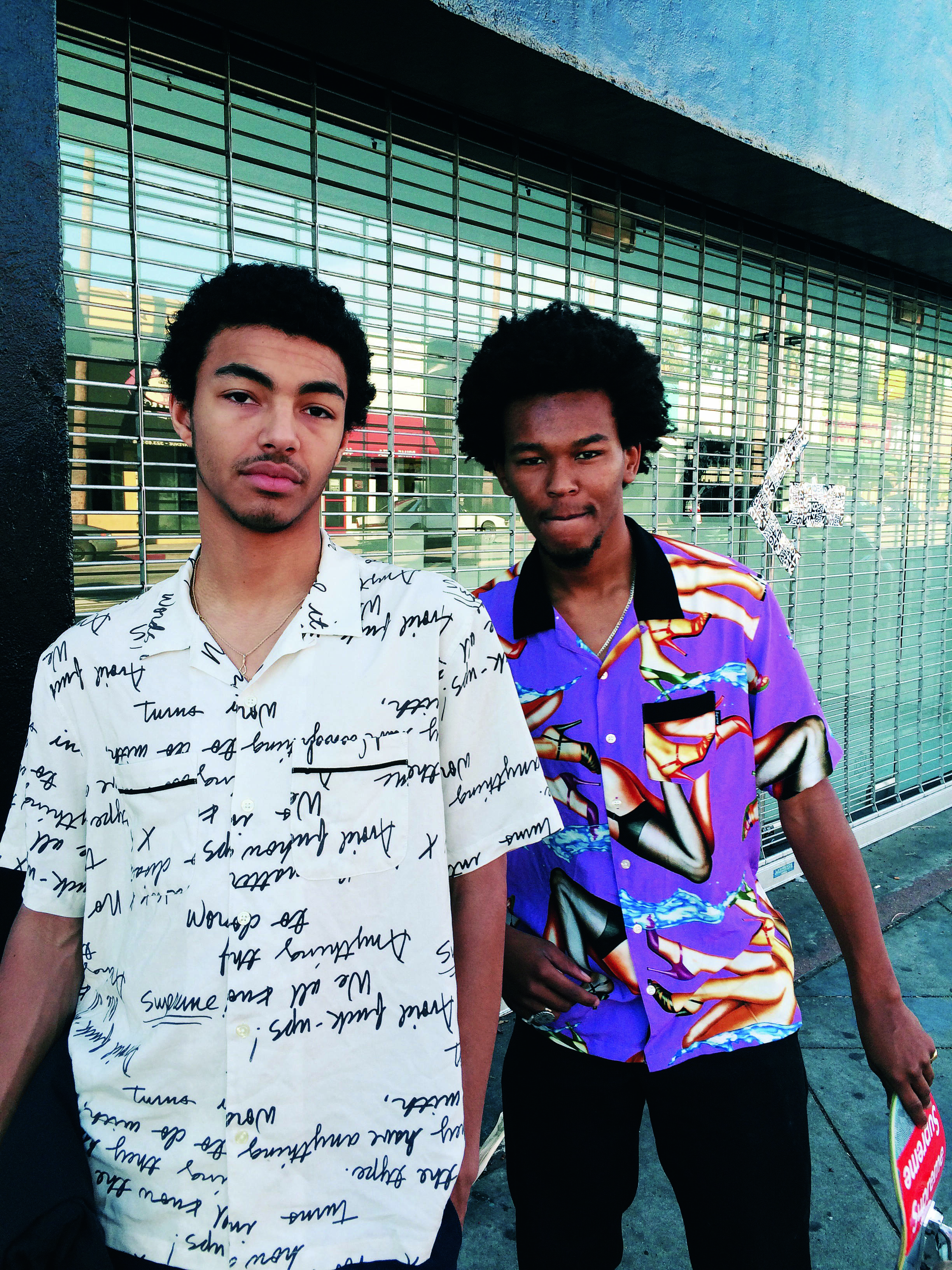
Sage Elsesser and Na-kel Smith by William Strobeck, LA, 2015
The mood grows even darker in the following lines, perhaps reflecting the short lives of some of those early skaters, such as Hunter, who died in 2006 at the age of 31; “the forgotten, some rose some fell, some lived some died, trap world rat pack, boosting crews rucksack, deceptikons, dirty blondes, another world, the city was a cess pool, no pools, it was a playground, it was perfect, it reeked with glory, fell 10 stories, so many stories.”
Korine gets a little more narrative in the next verse; “and one day the shop opened on lafayette, and my first apartment was two blocks away, my italian landlord won the block in a card game and at night the crew would, sit on my fire escape and we could escape, and stare down at the people walking by, and look up at the sky over broadway, yelling stoops on the stoop, posted up.”
“the come up, beers and weed, always cracking up, the weed, the we, and we were free,” Korine concludes, “and we thought it would never end off to the races, the moment was perfect, it barely existed, we got lost in it, got tossed in it, it was beautiful, it was supreme.”

Sounds like a time wonderfully misspent. To get lost in all that beauty yourself, order a copy of Supreme here.